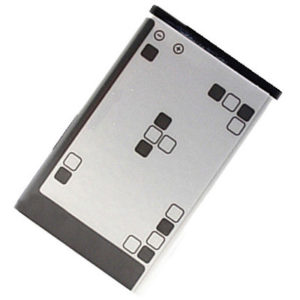What are the main aspects of secondary battery performance?
Voltage, internal resistance, capacity, internal pressure, self-discharge rate, cycle life, sealing performance, safety performance, storage performance, appearance, etc., others are overcharge, over-discharge, solderability, corrosion resistance, etc.

What are the electrical performance indicators of mobile phone battery blocks?
There are many electrical performance indexes of the battery block. Only the main electrical characteristics are introduced here:
- Battery block capacity: This indicator reflects the amount of electrical energy that the battery block can store in milliampere hours, for example, 1600mAH means that the battery can be continuously discharged for one hour at 1600mA.
- Battery block life: This indicator reflects the number of repeated charge and discharge cycles of the battery block.
- The internal resistance of the battery block: the smaller the internal resistance of the battery block, the better, but it cannot be zero.
- Battery block charging upper limit protection performance: When charging a lithium battery, the upper limit of its voltage has a rating. In any case, the voltage of the lithium battery is not allowed to exceed this rating. It is determined and guaranteed by the IC selected on the PCB.
- Battery block discharge lower limit protection performance: When the lithium battery block is discharged, the voltage of the lithium battery is not allowed to be lower than a certain rating under any circumstances. The rating is determined and guaranteed by the IC selected on the PCB. It should be noted that, when the general lithium battery block in the mobile phone is discharged, the lower limit protection value has not been reached, and the mobile phone is shut down due to insufficient battery power.
- Battery block short-circuits protection characteristics: When the exposed positive and negative plates of the lithium battery block are short-circuited, the IC on the PCB board should be immediately judged and reacted to turn off the MOSFET. When the short-circuit fault is eliminated, the battery can immediately output electrical energy. These are identified and executed by the IC on the PCB.
What are the battery reliability test items?
Generally includes:
- Cycle life
- Different rate discharge characteristics
- Different temperature discharge characteristics
- Charging characteristics
- Self-discharge characteristics
- Different temperature self-discharge characteristics
- Storage characteristics
- Over-discharge characteristics
- Internal resistance characteristics at different temperatures
- High temperature test
- Temperature cycle test
- Drop test
- Vibration test
- Capacity distribution test
- Internal resistance distribution test
- Static discharge test ESD.
What are the battery safety test items?
Generally includes:
- 1.Internal short circuit test
- Continuous charging test
- Overcharge
- High current charging
- Forced discharge
- Drop test
- Drop test from a height
- Penetration test
- Plane crushing test
- Cutting experiment
- Shelf test in low pressure
- Thermal abuse experiment
- Water immersion experiment
- Burning experiment
- High pressure experiment
- Baking experiment
- Electronic furnace experiment.
